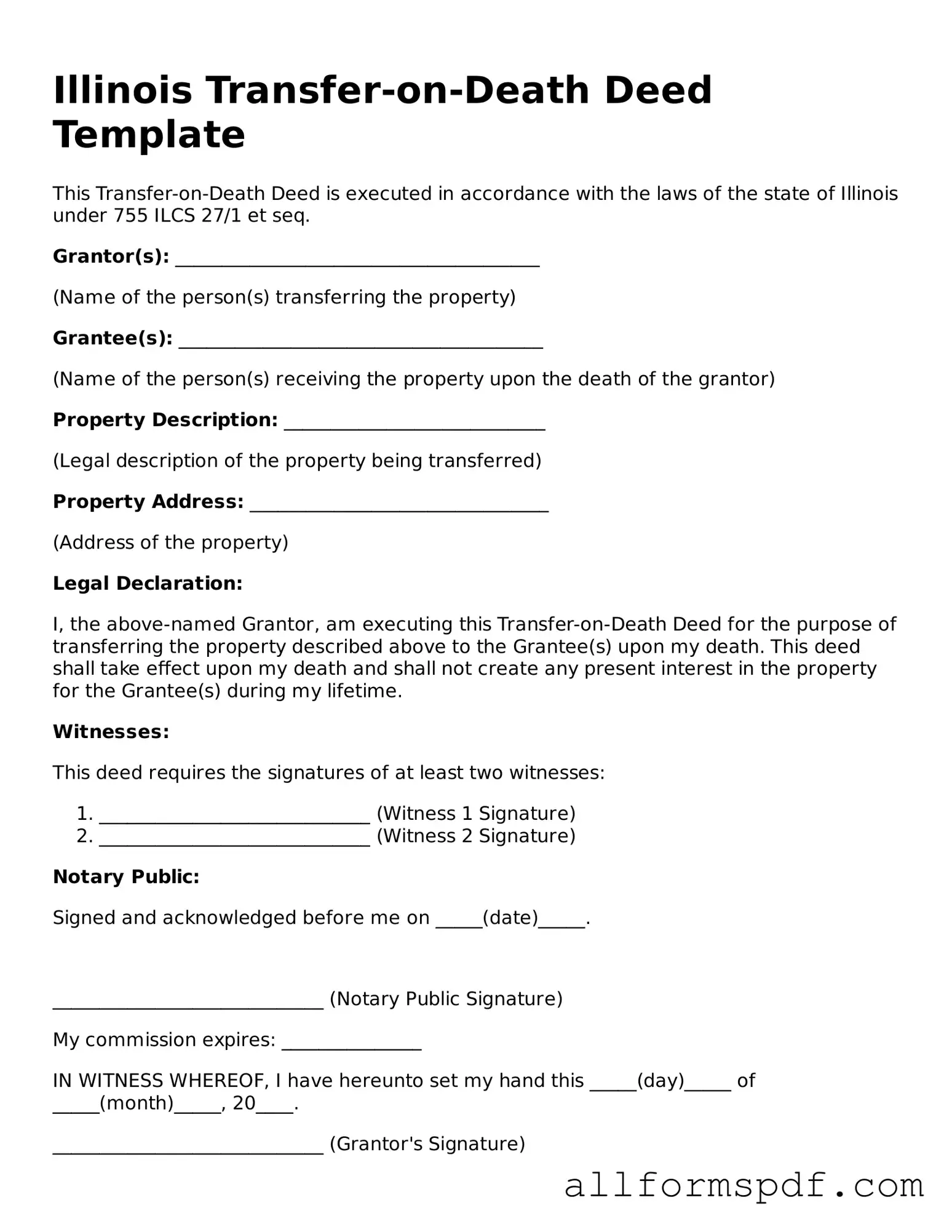Filling out the Illinois Transfer-on-Death Deed form can be a straightforward process, but many people stumble along the way. One common mistake is not clearly identifying the property being transferred. It's crucial to provide an accurate and complete legal description of the property. A vague description can lead to confusion and potential disputes in the future.
Another frequent error is failing to include all required signatures. The form must be signed by the property owner, and if there are multiple owners, each must sign. Omitting a signature can render the deed invalid, leaving your intentions unfulfilled.
Many individuals overlook the importance of notarization. The Transfer-on-Death Deed must be notarized to be legally binding. Skipping this step can result in the deed being challenged or deemed unenforceable.
Some people neglect to record the deed with the appropriate county office. Even if the deed is filled out correctly, if it’s not recorded, it won’t take effect. This oversight can lead to complications when the time comes to transfer the property.
Another mistake is not considering the implications of transferring property upon death. Some individuals fail to think about how this decision affects their heirs and any potential tax consequences. It’s wise to consult with a financial advisor or estate planner before making this choice.
In addition, people sometimes forget to update the deed after significant life changes, such as marriage or divorce. Failing to revise the deed can lead to unintended beneficiaries receiving the property, which might not align with the owner's wishes.
Misunderstanding the beneficiary designation is another pitfall. It's important to clearly name the beneficiaries and ensure that their information is accurate. Errors in names or addresses can complicate the transfer process.
Some individuals may not take the time to inform their beneficiaries about the deed. It’s essential for those who will inherit the property to know about the Transfer-on-Death Deed. This communication can prevent confusion and ensure a smooth transition.
Lastly, people often rush through the process without reviewing the form thoroughly. Taking a moment to double-check all entries can save a lot of time and trouble later. Attention to detail is key in avoiding mistakes that could impact the transfer of your property.
